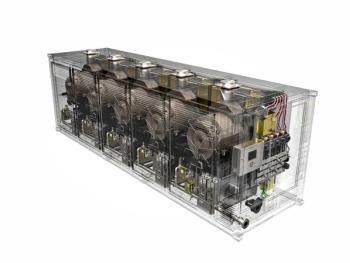
GE Vernova Releases AI-Powered Software: Fleet Orchestration
Fleet Orchestration is a software solution designed to assist power utilities in maximizing the use of renewable energy.
GE Vernova’s Digital business announced the release of its Fleet Orchestration software, which is designed to enable the maximum use of renewable energy in power utilities. In addition to efficient renewable energy usage, the software accelerates the carbon reduction targets of existing assets while maintain the ability to meet demand. Prior to the release of Fleet Orchestration, GE Vernova unveiled its CERius software for carbon emissions management.
Fleet Orchestration is an energy solution that uses artificial intelligence (AI), machine learning (ML), and advanced modeling. The software is designed for utilities that generate, transmit, and distribute power and it allows for the integration of renewables with current assets. Performance predictions and unit commitment optimizer modules are included as features of the Fleet Orchestration software.
“Industrial firms seeking to integrate large amounts of renewable energy into the grid while maintaining stable and reliable power supplies are being forced to identify dynamic solutions that can adapt to ever-changing conditions and demands of the energy landscape in real-time,” said Kiran Darmasseelane, Industry Analyst at Verdantix. “Solutions like GE Vernova’s Fleet Orchestration represent the puzzle piece that, until now, has been missing for the industry.”
The performance prediction module has only been available for thermal power generation, but it is now available to provide renewable energy predictions. These predictions are automated to various time intervals ranging from 15 minutes to weekly for each unit, block, and plant within the fleet. The unit commitment optimizer module relies on a fast-running stochastic model to provide probabilistic insights for planning and recommendations on how to navigate matching generation and demand. Demand and generation recommendations set appropriate reserve margins and maximize the use of renewables while preserving reliability—both of which reduce the carbon footprint of a utility.
An additional feature within Fleet Orchestration is the ability to integrate GE Vernova’s GridOS advanced energy management system (AEMS)—a software portfolio designed for grid orchestration. Forecasting, unit commitment, and grid orchestration software will help to meet demand and stabilize the grid with cost-efficiency and sustainability.
“Renewables like wind and solar play an important role in the energy transition; they’re the key to reducing the world’s dependence on fossil fuels. The challenge is that these energy sources are inherently variable—the wind doesn’t always blow, and the sun doesn’t always shine,” said Linda Rae, General Manager, Power Generation and Oil & Gas for GE Vernova’s Digital business. “This is where software solutions, such as Fleet Orchestration, can help reduce this uncertainty for power companies, giving them the confidence needed to ensure grid stability while simultaneously reducing emissions.”
Newsletter
Power your knowledge with the latest in turbine technology, engineering advances, and energy solutions—subscribe to Turbomachinery International today.




